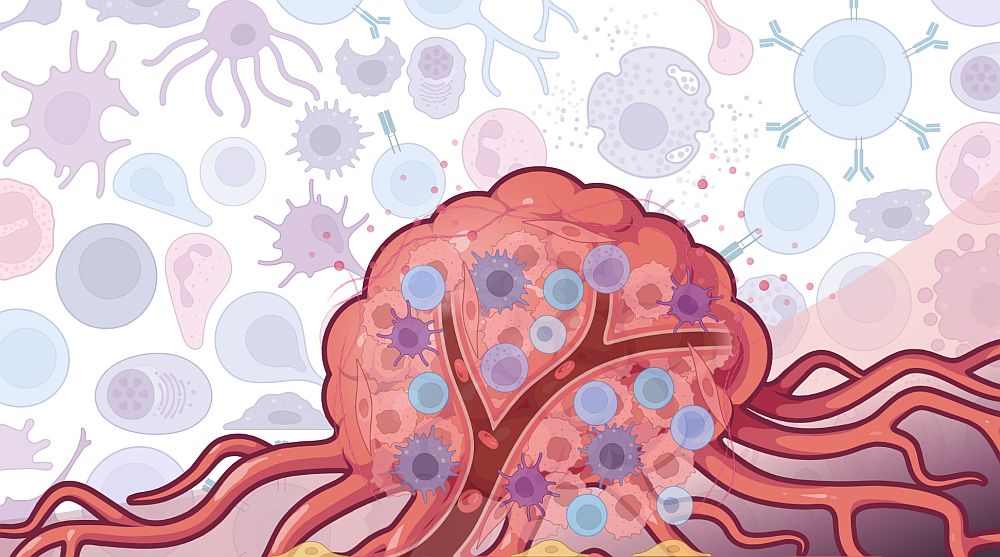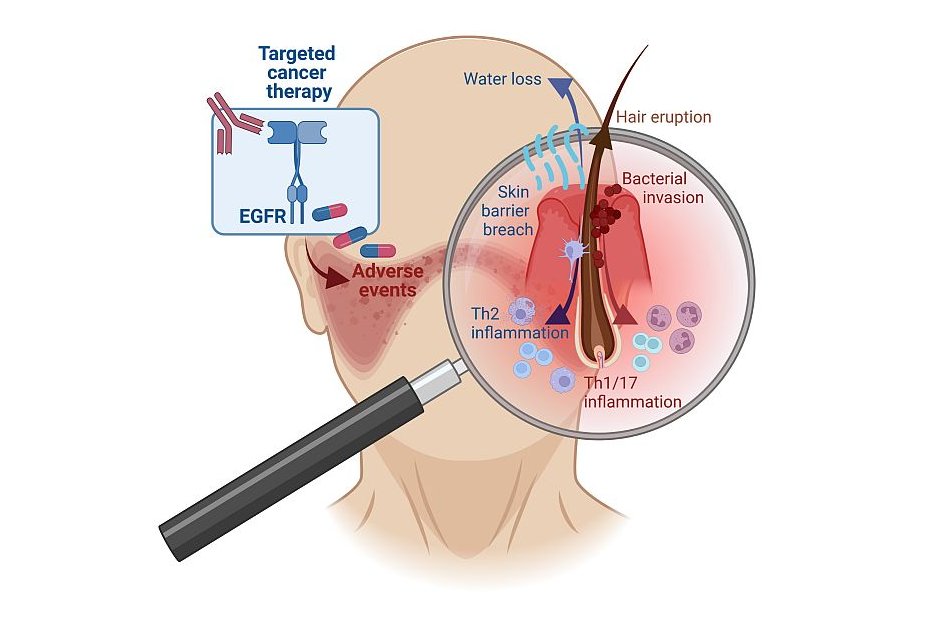Rash
Couple of days after EGFR targeted anti-cancer therapy start, patients develop acneiform follicular eruptions in the face and upper trunk. These adverse events are stigmatizing the patient and secondary bacterial infections can dramatically worsen the symptoms. In this project we want to understand the molecular mechanism underlying these rashes.
Applying the newest scientific methods, we describe the misguided hair eruption with the aim of influencing its adverse effect. We focus thereby on one hand on the inflammatory reaction and on the other hand on the mechanistic details of the hair canal development and its function as microbial gatekeeper.
The amelioration of the skin rash would ultimately lead to the enhancement of anti-therapy efficiency and would simultaneously enhance the quality of life of the patients.
Hairloss
Hairloss represents the most frequent and most stigmatizing adverse event during classical chemotherapy and radiotherapy. During prolonged treatment with EGFR targeted anti-cancer agents, hairloss results from severe follicular inflammation.

This project aims to understand the behaviour of the hair follicle stem cells during inflammatory insults. The hair follicle stem cells are normally protected from destruction through immune cells by the immune privilege. This defensive shield, however, gets challenged during anti-cancer therapy with hairloss as its consequence. We now want to analyse this protective shield in order to keep it raised during cancer therapy.
Inflammatory effects on cancer cells
No effect without adverse effects. This project aims to describe the influence of the inflammatory adverse events on cancer growth and survival. Observations from the clinic point to a correlation between the rash severity and the anti-cancer treatment success.

We therefore want to investigate the mode of action of the immune cells during anti-cancer therapy and utilize them to fight the tumor cells. The overall aim is to improve anti-cancer therapy with the help of the immune system to develop novel therapeutic approaches and combination therapies.

